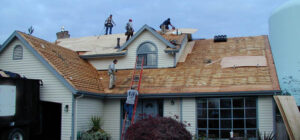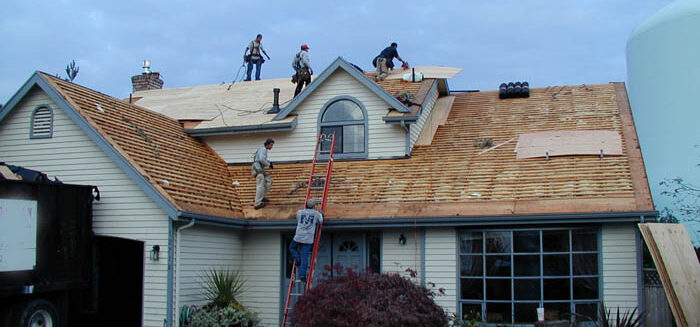How to Perform a Successful Roofing Installation
A roof is a home’s first line of defense against the elements. That’s why it’s so important to make sure it’s installed properly. Poor workmanship is a common cause of leaks, shingles that sag, and gaps between shingle edges. Luckily, it’s not difficult to avoid these issues and get a roof that looks and functions as good as new. But if you need some professional help, Roofing Columbus GA is one call away.

Roofing materials are essential for home construction and installation as they provide protection from the elements. They also add value to the house and help you maintain its functionality. In choosing the right material, you need to consider factors such as cost and durability.
Durable roofs are a good investment because they can last for years and save you money from having to renovate your home sooner. Moreover, they will help you save on insurance premiums.
There are many types of roofing materials that you can choose from. Some of the most popular include asphalt shingles, terracotta tiles, metal panels, and membrane roofing. Each material can withstand different weather conditions and climates over time.
Asphalt shingles are the most common type of residential roof. They are made of a composite material that is impregnated with asphalt and coated with mineral granules. These shingles are available in different styles, such as traditional 3-tab shingles and thicker laminated “architectural” shingles.
Shingles are a lightweight option for roofs, especially those that are low-sloped. Typically, they weigh about half as much as concrete or clay tiles.
Slate is another durable roofing material, and its natural look is very appealing. Often used in luxury homes, slate can last up to 150 years and withstand extreme temperature fluctuations, high winds, and hail.
Wood is an inexpensive and versatile option for a roof and can be made from pine, cedar, cypress, or redwood. It can be either a shake (hand-cut into a wedge-shaped tile) or a shingle (sawn to a uniform length and thickness).
Metal is another durable option, and it is commonly installed as a seamed roof. Steel, copper, and copper-and-asphalt are some of the most common metal roofing options.
Whether you’re looking for an eco-friendly or classic look, you can find the perfect material for your project with a little research. You’ll want to check out a variety of colors and styles before you make your final decision.
If you’re not sure which roofing material is best for your project, talk with a professional contractor. They’ll be able to help you find the ideal material and ensure your project is done correctly.
Whether you’re an expert on roofs or a beginner, taking accurate measurements is crucial to performing a successful roofing installation. Accurate measurement can help you determine how much material you need, ensure the proper amount of shingles, and avoid costly waste.
The first step in getting started is determining the square footage of your roof. This will give you an idea of how many bundles of shingles are required to cover your roof.
You’ll need a tape measure, level, pen and paper, and safety equipment such as a ladder. Using a tape measure, begin by measuring the length of one plane of your roof. The longer and wider your roof, the more planes you’ll need to measure.
Once you’ve determined the length of each plane, repeat steps 1 through 6 on each other plane until you’ve covered the entire area. Once you’ve done this, multiply the measurements to get the square footage of each plane.
Next, calculate the pitch of your roof. To do this, position your ladder near the roof’s top and measure vertically from a 12-inch mark on the level to the bottom of a rafter.
While this method can be a bit time-consuming, it’s an easy and effective way to determine the slope of your roof. If your roof has overhangs on either side, estimate the length of them by eyeballing them and adding them to your total measurements.
Alternatively, you can use a calculator to calculate the pitch of your roof. A quick online search will yield numerous calculators for different types of roofs.


